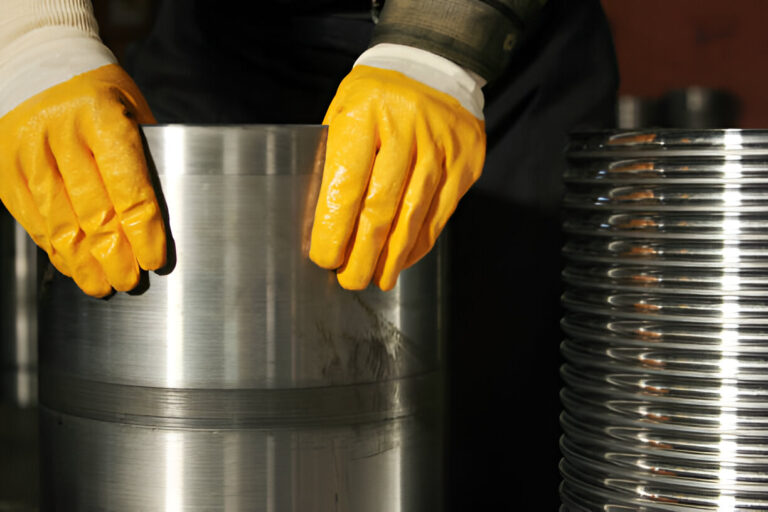Have you noticed a drop in engine performance and rising maintenance costs? Engine components undergo constant stress, leading to wear and reduced efficiency. Proper care of internal parts ensures durability and optimal operation.
One crucial component that requires attention is the cylinder liners. This article covers common reasons behind liner degradation and effective ways to minimize damage. Let’s explore how to extend the lifespan of these essential components.
Friction and Abrasive Wear
Friction occurs naturally as engine components move, leading to gradual material loss. High-speed operations create excessive contact between surfaces, accelerating wear. Abrasive particles from poor-quality fuel or oil contribute to additional damage. Metal-to-metal contact increases when lubrication fails, worsening the situation. Using high-grade oil and regular lubrication can reduce friction-related deterioration.
Cleaning fuel and oil filters frequently help remove harmful contaminants. Choosing the right liner material can also minimize damage from high-speed friction. Properly maintained lubrication systems ensure smooth operation and prevent overheating. Routine inspections help detect early signs of friction-based wear. Reducing engine strain and following manufacturer guidelines can further enhance durability.
Corrosion from Contaminants
Engines operate in harsh environments, exposing liners to various corrosive elements. Moisture and acidic byproducts from combustion can erode the liner surface. Inadequate cooling systems fail to regulate temperatures, leading to chemical reactions. Low-quality fuel often contains impurities that accelerate corrosion. Preventing contamination is key to preserving liner integrity.
Using fuel with minimal sulfur content reduces the risk of acidic reactions. Proper cooling system maintenance ensures stable temperature control. Routine oil changes help eliminate corrosive elements from the engine. Regularly inspecting liners for early corrosion signs prevents costly repairs. Applying anti-corrosion coatings can add an extra layer of protection.
Improper Lubrication Practices
Lubrication is vital for reducing friction and preventing wear. Insufficient oil supply can cause dry running, increasing heat and stress. Low-quality lubricants fail to provide adequate protection, leading to premature failure. Using the wrong viscosity grade can disrupt engine performance. Overlooking regular oil changes allows sludge buildup, which harms internal components.
Choosing high-performance lubricants enhances engine efficiency and longevity. Following recommended oil change intervals keeps the system clean. Monitoring oil pressure ensures continuous lubrication during operation. Implementing a thorough lubrication plan prevents unnecessary engine strain. Using synthetic oils can offer better resistance to extreme conditions.
Overheating and Thermal Expansion
Excessive heat can weaken liner materials, causing cracks and deformation. Poor cooling system performance leads to temperature imbalances within the engine. Rapid expansion and contraction due to extreme heat cycles accelerate liner wear. Blocked cooling passages prevent effective heat dissipation. Keeping temperatures in check is essential for maintaining liner condition.
Regularly checking coolant levels prevents overheating issues. Flushing the cooling system removes deposits that block heat transfer. Installing temperature sensors helps monitor engine heat fluctuations. Ensuring proper airflow around engine components enhances cooling efficiency. Avoiding prolonged high-speed operation reduces thermal stress on liners.
Mechanical Stress and Misalignment
Engines generate immense pressure, which can strain internal components. Misaligned parts create uneven force distribution, leading to localized wear. Improper liner installation results in poor seating, causing premature damage. Excessive vibrations from worn-out mounts increase mechanical stress. Addressing these issues early helps maintain structural integrity.
Ensuring precise installation minimizes misalignment-related problems. Using high-quality fasteners keeps components securely in place. Checking for signs of abnormal vibrations helps identify potential alignment issues. Regular maintenance prevents unnecessary stress on liners. Following engine specifications for torque and clearance ensures stability.
Protecting cylinder liners from premature wear requires proactive maintenance and careful engine management. Friction, contamination, and overheating are common factors that contribute to degradation. Regular lubrication, proper cooling, and high-quality fuel can significantly extend liner life. Routine inspections and timely replacements prevent costly repairs and downtime. Keeping liners in top condition ensures optimal engine performance and longevity.


